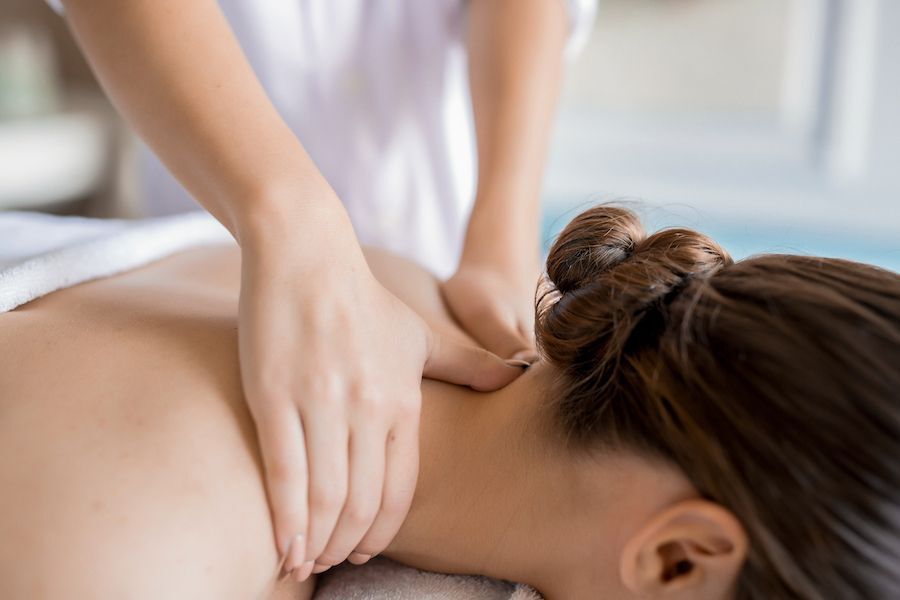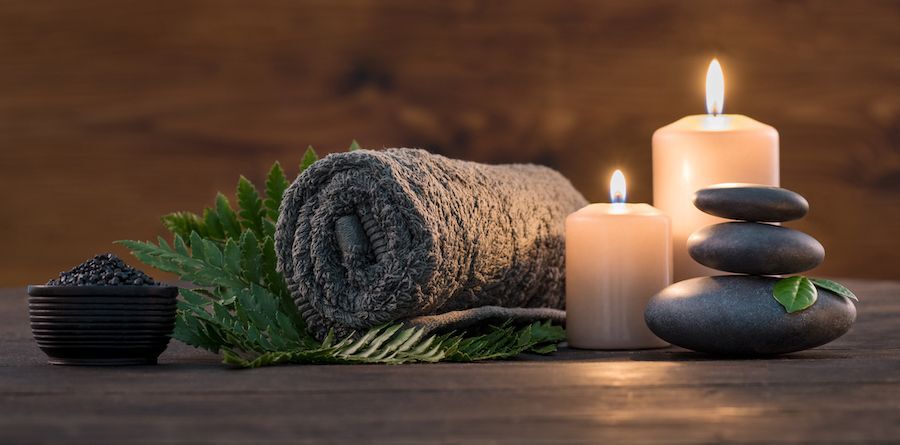What is massage therapy?

Massage involves working on the body with pressure with special skills and techniques applied to different parts of the body. A massage therapist may use the hands, fingers, elbows, knees, forearm, feet, or a massage device. Massage can be used for pain and other medical conditions. It can also promote relaxation and well-being. Massage therapy is sometimes done using essential oils.
Types of massage therapy
There are many different kinds of massage. You can talk to your health professional about which kind might be best for you.
- Swedish massage: Uses long strokes, kneading, deep circular movements, vibration, and tapping.
- Sports massage: Combines techniques of Swedish massage and deep tissue massage to release chronic muscle tension. It should be adapted to the needs of athletes.
- Myofascial trigger point therapy: This focuses on trigger points. There are areas that are painful when pressed. These points are generally associated with pain elsewhere in the body.
- Deep tissue massage: Similar to Swedish massage. It includes deeper pressure which is beneficial in chronic muscle pain and tension.
- Movement integration: Used to reorganize connections between the brain and body. Helps improve body movement and psychological state
- Neuromuscular massage: This is a specialized form of deep tissue massage. It is done with applying pressure and friction with fingers on trigger points.
- Aromatherapy massage: This uses essential oils during a massage session that helps in relaxation and decreases stress
- Transverse friction massage (TFM): This is used in reducing chronic pain and scar tissues.

What is massage good for?
Massage therapy can help relieve pain, improve circulation, loosen tight joints, and build an overall sense of relaxation and well-being.
Conditions for which massage could help:

- Pain Relief:
- Neck pain
- Lower back pain
- Headaches, especially tension headaches
- Carpal tunnel syndrome
- Pain due to osteoarthritis
- Fibromyalgia
- Mental health:
- Anxiety
- Depression
- Relaxation and stress reduction
- Muscle relaxation
- Muscle recovery after musculoskeletal injury, muscle rehabilitation
- Sleep
- Cancer: improvement in pain, sleep, state of anxiety, fatigue or quality of life. Also promotes relaxation and boosts mood
- Infant care: improves weight gain and muscle growth
Are there any side effects or risks?
Massage is extremely safe. You should work with a trained massage professional. In some cases, pregnant women should avoid massage therapy. It is important to talk with your healthcare provider before getting a massage if you are pregnant. In case of any skin wounds, ulcers or burns, massage should be avoided to prevent further breaking of the skin.
Print Version
References/Resources
Furlan AD et al., Massage for low-back pain. Cochrane Database of Systematic Reviews. 2008;(4):CD001929 [edited 2010].
Jahdi F et al., The Effect of Slow-Stroke Back Massage on the Anxiety Levels of Iranian Women on the First Postpartum Day. Iran Red Crescent Med J. 2016 Jun 7;18(8):e34270. eCollection 2016.
Kalichman L. Massage therapy for fibromyalgia symptoms. Rheumatology International. 2010;30(9):1151–1157.
Begovic H et al., The neuromotor effects of transverse friction massage. Man Ther. 2016 Dec;26:70-76. doi: 10.1016/j.math.2016.07.007. Epub 2016 Jul 21.
Perlman AI et al., Massage therapy for osteoarthritis of the knee: a randomized dose-finding trial. PLoS One. 2012;7(2):e30248.
Sherman KJ et al., Effectiveness of therapeutic massage for generalized anxiety disorder: a randomized controlled trial. Depression and Anxiety. 2010;27(5):441–450.
Zainuddin Z et al., Effects of massage on delayed-onset muscle soreness, swelling, and recovery of muscle function. J Athl Train. 2005 Jul-Sep;40(3):174-80.
Sherman KJ et al. Randomized trial of therapeutic massage for chronic neck pain. Clinical Journal of Pain. 2009;25(3):233–238.
Cassileth BR et al., Massage therapy for symptom control: outcome study at a major cancer center. J Pain Symptom Manage. 2004 Sep;28(3):244-9.
Moraska A et al., Changes in clinical parameters in patients with tension-type headache following massage therapy: a pilot study. Journal of Manual & Manipulative Therapy. 2008; 16(2):106–112.
McGrath JM et al., Touch and massage in the newborn period: effects on biomarkers and brain development. J Perinat Neonatal Nurs. 2009 Oct-Dec;23(4):304-6.
Myers CD et al., The value of massage therapy in cancer care. Hematol Oncol Clin North Am. 2008 Aug;22(4):649-60
Patient Education Materials
- Acupuncture
- ADHD
- Allergic Rhinitis
- Anxiety
- Aromatherapy
- Asthma
- Autism
- Back Pain
- Biofeedback Therapy/Training
- Breathing Techniques
- Cancer Symptoms
- Chiropractic
- Constipation
- Depression
- Diabetes
- Dyslipidemia
- Eczema
- Elimination Diet
- Fibromyalgia
- GERD
- Headache
- Healthy Diet
- Healthy Weight / Obesity
- Heart Disease
- High Blood Pressure
- Inflammatory Bowel Disease
- Insomnia
- Irritable Bowel Syndrome (IBS)
- Meditation
- Menopause
- Menstrual Disorders
- Osteoarthritis
- Physical Activity
- Probiotics
- Progressive Muscle Relaxation
- Rheumatoid Arthritis
- Supplements
- Tai Chi
- Yoga